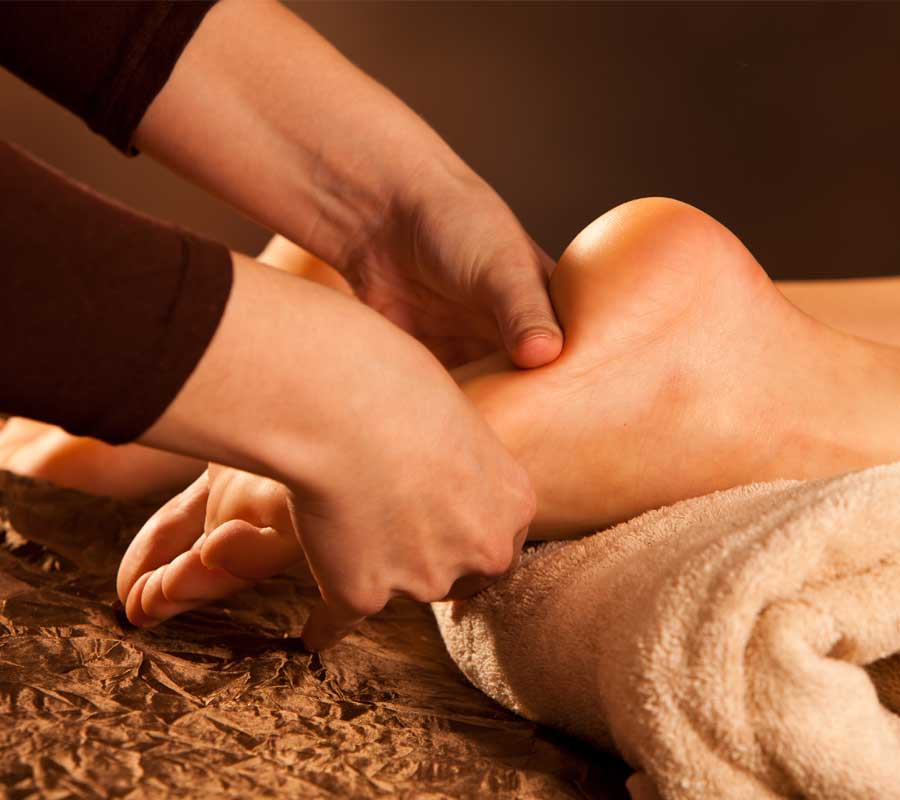What is Plantar Fasciitis?
Plantar fasciitis is an extremely painful condition of the heel. It is one of the most common causes of heel pain.
While there are many causes of plantar fasciitis, the most common cause is inflammation of a band of tissue called the plantar fascia. The plantar fascia runs along the bottom of the foot, and connects the heel bone to the toes. Patients who suffer from plantar fasciitis report stabbing pain in the heel and bottom of the foot, and typically the pain is worse in the morning when the patient first rises. As the ligaments of the foot loosen up with movement, the pain eases somewhat, but can return to a more severe level if the foot isn’t not continually in motion.


What are the Causes of Plantar Fasciitis?
The plantar fascia acts as a shock absorber for the arch of your foot. If the tension on this ‘shock absorber’ becomes too tight, tears can occur in the fascia. These tears can become inflamed and irritated with over-use. Plantar Fasciitis is a bit of a vicious circle in terms of how it occurs, and how it is relieved. Over use of the foot can cause tears to the fascia, but in order to help reduce pain, you must continue to use the foot.

What are the Symptoms of Plantar Fasciitis?
People who suffer from plantar fasciitis report a stabbing pain in the bottom of the foot, usually in the area of the heel. Some patients also experience a feeling of stiffness in the heel and ankle. As well, most patients report a burning sensation that starts on the bottom of the foot and radiates out towards the heel.

Risks of Plantar Fasciitis
There are several things that can put you at risk of developing plantar fasciitis:
Age
While people of all ages can suffer from plantar fasciitis, it is most commonly diagnosed in people between 40 and 60 years of age.
Existing Problems with Your Feet
If you suffer from other foot issues, such as flat feet or excessively high arches, you are at risk of developing plantar fasciitis.
Weight
If you are obese or over weight, your risk of plantar fasciitis rises. When a person is overweight, the pressure on the plantar fascia ligaments increases.
Participating in Sports
Certain sports, especially those that involve running, can raise your risk of developing plantar fasciitis. Our sports chiropractors can assist in this area.
Occupation
If you work in a job that puts a lot of stress on your feet, your risk of developing plantar fasciitis rises.

Plantar Fasciitis Diagnosis
While many cases of plantar fasciitis are diagnosed based on the symptoms the patient reports, the diagnoses can be confirmed by MRI or X-rays. These tests can also rule out other problems that may be causing your foot pain, pain that appears to mimic that of plantar fasciitis.
What are the Treatment Options for Plantar Fasciitis?
There are many treatment options available for patients who suffer from plantar fasciitis. These treatments can range from at-home treatments, to therapeutic treatments.
Home Treatments for Plantar Fasciitis
Rest
While the condition of plantar fasciitis can be exacerbated by inactivity, it’s important to allow your feet to rest as well. Elevating your feet and applying ice for twenty minutes at a time at least once each day can help alleviate the symptoms of plantar fasciitis.
Stretching
Performing gentle stretching exercises at home on a regular basis can help to keep your feet and ligaments limber. At Broadway At Yew, we recommend a specific stretching routine for up to 3 minutes per stretch daily. This will help to reduce the pressure and pain caused by a tightening of the plantar fascia.
Orthotics
Orthotics are available for purchase ‘over the counter’. These orthotics may provide relieve, especially for patients who work in jobs where they are on their feet for long hours. If you find that over the counter versions aren’t effective, a foot specialist can fit you with custom orthotics.
Proper Footwear
Along with orthotics, ensure that you wear shoes with good shock absorption and arch support. This will help support the plantar fascia during the day.
Over the Counter Medications
NSAIDs such as ibuprofen and acetaminophen can help with the pain caused by plantar fasciitis.
Treatment and Therapy
There are several different types of treatments and therapies that can help reduce the symptoms of plantar fasciitis.
Physical Therapy
Physical therapy can be used to perform special stretches and exercises that will help stretch out the plantar fascia. As well, these exercises will help strengthen your lower legs which in turn will provide extra support for your ankles and heels.
Chiropractic
Special adjustment techniques that make use of low-level force help to correct alignment issues within the feet that lead to plantar fasciitis.
Additionally, the Active Release Technique can be used in conjunction with other treatments, to provide long-term relief of the symptoms of plantar fasciitis.
Our Vancouver chiropractors have treated several patients for this condition.
Splints
Special prescription splints can be made for you to wear at night. These splints will help stretch the calk and arch of the foot while you sleep. The goal is to train the plantar fascia to lengthen in order to reduce the pain caused by stretching of an overly tight fascia.
Prescription Orthotics
As noted above, your foot specialist can prescribe special orthotics that are made just for your feet. These orthotics will help to distribute weight and pressure more evenly to your feet.
Medications
Prescription medications such as NSAIDs and painkillers will help treat the pain caused by plantar fasciitis. A Steroid injection such as cortisone can help to reduce swelling and inflammation.
Plantar Fasciitis Summary
Plantar Fasciitis is a condition of the feet caused by a tightening of the plantar fascia ligament. There are a variety of treatment options available for patients who suffer from the condition. The best way to reduce your symptoms of plantar fasciitis is through a combination of treatments and exercises, including physical therapy, and chiropractic.
If you’re seeking Plantar Fasciitis Treatment in Vancouver, we can help!

